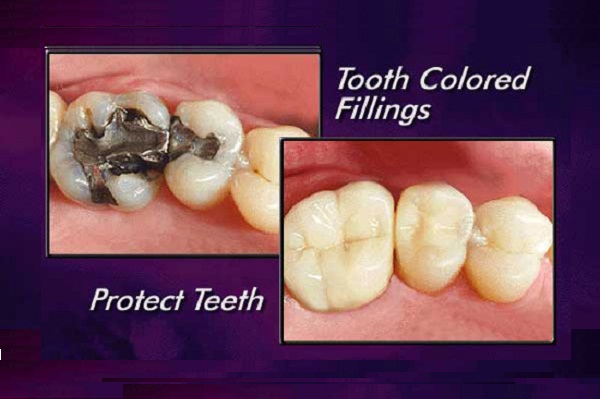Dental Fillings
Dental Fillings
Gum Disease
Currently there are two materials commonly available for tooth fillings.

-Composite, or white/tooth-colored material. Composite resin material is made of a combination of plastic and glass, and is generally more natural-looking.
Amalgam, known as silver fillings. Amalgam is a combination of metals bound together with elemental mercury. The American Dental Association (ADA) as well as the U.S. Food and Drug Administration (FDA) currently list dental amalgam as a safe and effective material for dental restoration.
What are the steps involved in a dental filling?
First, your dentist will numb the area to be treated with a local anesthetic. Then, he or she will prepare the tooth by removing the decayed portion of the tooth, or existing restorative materials. The size of the dental filling, or the number of tooth surfaces requiring treatment, will depend on the tooth as well as the extent of the damage or decay.
Once the tooth has been prepared and cleaned, your dentist will fill in the missing portion of the tooth structure with composite restorative material. Your dentist will shape the material to match as closely as possible to the former tooth structure. Your dentist may ask you to bite down to make sure your teeth fit together comfortably. Your dentist will adjust the shape of the filling until it is comfortable for you.
Dental Fillings for Children
Primary, or baby teeth, are generally softer and more porous than adult (permanent) teeth. This can make them more susceptible to decay and dental cavities. The dental filling procedure and recovery process for pediatric patients is very similar to that of adults. In some cases, Nitrous Oxide may be used to help a child feel more relaxed during the procedure. In this case, your child should not eat for 2 hours prior to the procedure.
Cost and Insurance Coverage for Dental fillings
The cost of dental fillings will vary depending upon a variety of factors, including the size of the filling and extent of the decay. Prior to your procedure, your dentist will review what treatment is needed, and our staff will provide you with information about any fees associated with the procedure, as well as options available to help make sure your receive the dental care you need in a way that fits into your budget.
If you have dental insurance, your coverage often includes preventative care including regular exams and x-rays. It is important to stay up to date with your insurance coverage. Our staff are happy to review your coverage with you to ensure you are maximizing your insurance benefits while minimizing any out of pocket expenses.
Signs and Symptoms:
How do I know if I might need fillings?
Dental cavities can sometimes cause pain or sensitivity to hot or cold, but sometimes cavities may not cause pain. In some cases, it may be possible to see decay on the outside of the tooth, but in many cases, a dental cavity can only be detected through dental x-rays and examinations.
It is best to treat cavities as soon as they are diagnosed in order to have the best chance of saving the original tooth, while preventing future dental emergencies which could result in the loss of the tooth. If any cavities are diagnosed and the issue is not extensive, your dentist will often recommend dental fillings to restore your tooth to it’s normal form and function.
Post-procedure care for dental fillings
Healing following a dental filling procedure is typically quick and easy. Your dentist will provide you with post procedure instructions, which include avoiding very hot or cold food or beverages, as well as chewy or hard foods or snacks for a period of time.
Once the healing is complete, you should be able to return to normal use of your teeth. However, it is important to remember that dental restorations need to be cared for and maintained regularly to make sure they are strong and intact.
Frequently Asked Questions about dental fillings
Where can I get a dental filling?
All Fresh Smiles Advanced Orthodontics and Dental Care Clinic Family Dental offices offer dental fillings as a part of our comprehensive oral health services.
How long will dental fillings last?
Dental fillings can last quite a long time when they are properly cared for. That’s why it is very important to follow a great home oral hygiene routine that includes brushing and flossing, and getting regular professional check-ups and cleanings every 6 months.
I have Amalgam (silver) fillings. Should I have them replaced?
Fresh Smiles Advanced Orthodontics and Dental Care Clinic Family Dental recommends only replacing fillings of any kind when there is an issue such as wear, decay, pain, cracking or breaking of the tooth or filling. If you notice any of the issues listed above, we recommend you see your dentist as soon as possible for an exam. Tiny cracks and wear in fillings can often be detected during regular exams and x-rays at a dental checkup.
